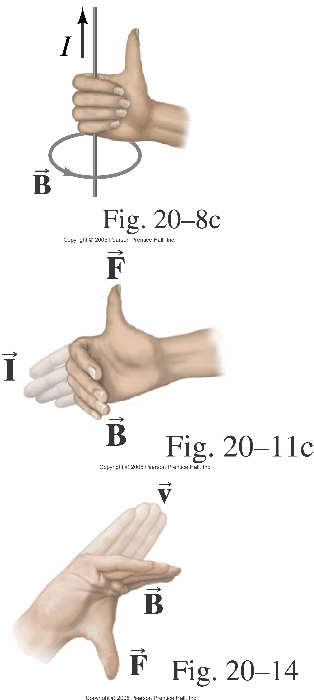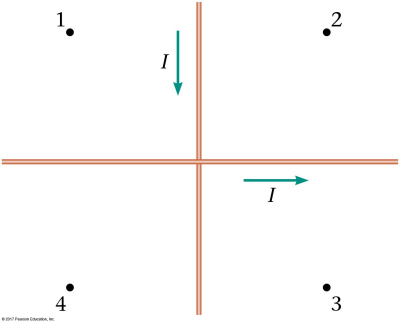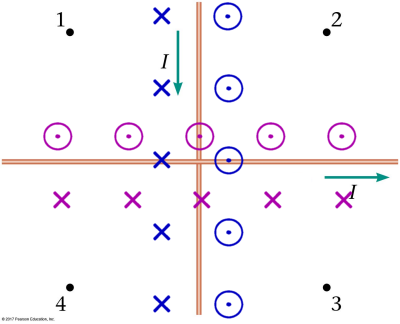Summary
- Capacitor circuits
- Magnets
- Magnetic fields

- Quiz Bonus ch. 21
- Currents and magnetic fields
- Currents and magnetic fields video
- Lecture learning outcomes
A student who masters the topics in this lecture will be able to:
- use the appropriate right-hand rule to predict the direction of the magnetic field that circulates around an electric current
- draw magnetic lines of force to represent the magnetic field around a current
- use algebra to find the magnetic field B, current I, or radial distance r when any two of these quantities are given
Practice:
Try these additional examples
Example #3
Example #4
Prepare:
Read textbook sections 22-2 through 22-4 before the next lecture
PSE6 27.51
About how much does it cost to use a 700-watt coffee maker every morning for a year?
Assume electricity costs about $0.10/kWh.
A. $1
B. $10
C. $100
D. $1000
Answer
klm
A wire carries an electrical current towards the north. In which direction does B point directly
above the wire?
A. North
B. South
C. East
D. West
Answer
gc6 20.26
A jumper cable used to start a stalled vehicle carries a 65 A current. How strong is the magnetic
field 6.0 cm away from it?
A. 2.17×10−4 T
B. 6.90×10−5 T
C. 3.45×10−5 T
D. 1.38×10−6 T
Answer
Walker5e fig 22-32
Two current-carrying wires cross at right angles, as shown. At which points will the magnetic
field be the strongest?
 A. Point 3
A. Point 3
B. Points 1 and 2
C. Points 1 and 3
D. Points 2 and 4
Answer
Walker5e CnEx 22-12
The magnetic field shown below is due to the horizontal, current-carrying wire. Which way does
the current in the wire flow?

A. to the left
B. to the right
C. either direction produces the same magnetic field
Answer
B. $10

This assumes you run the coffee maker for 20 minutes every morning and the
price is $0.10 /kWh.
C. East
Using the right-hand-rule, point your thumb toward the north, the same direction as the current. The curled
fingers of your right hand would point east directly above the wire.
A. 2.17×10−4 T

D. Points 2 and 4
Using the right-hand-rule, you can find the magnetic fields due to the currents are
each out of the page on the right side of the vertical wire, and above the horizontal wire. This means the two fields
tend to add at points 2 (each out of the page) and 4 (each into the page), and tend to cancel at points 1 and 3.


A. to the left
Using the right-hand-rule, your fingers point into the page above the wire and out of the page below the wire when your thumb points toward the left. That is the direction of the electric current in the wire.

 A. Point 3
A. Point 3


